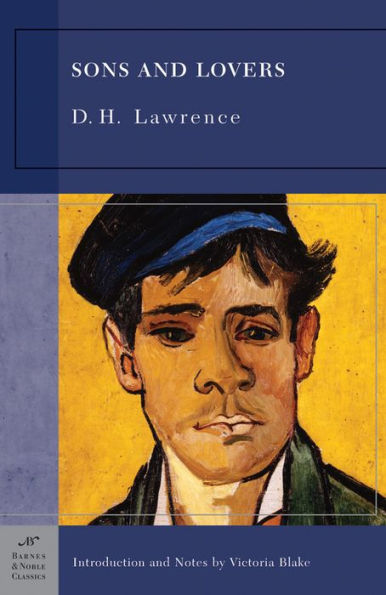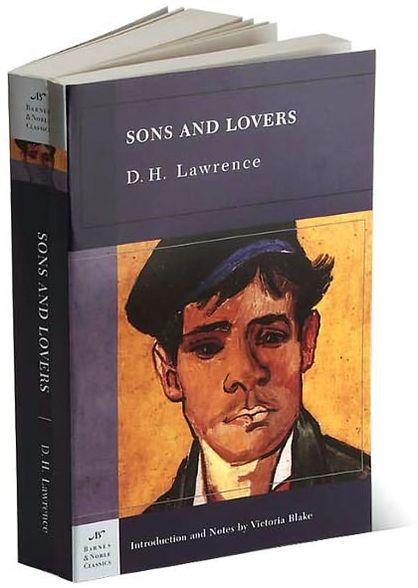Read an Excerpt
From Victoria Blakes Introduction to Sons and Lovers
The story of how and why D.H. Lawrence wrote Sons and Lovers is a love story as much as it is a story about literature. The story begins at D.H. Lawrences birth and ends just before the outbreak of World War One. Although it is a love story, it is not a story about amor, per se, the exclusive romantic love. Rather, it is about love in all its various guises-love for the Mother Country and the mother, love for the work of writing and, above all, love for life itself. D.H. Lawrence was a passionate man; he threw himself into life. In his presence, his peers were aware of life lived more highly, of emotions felt more truly and of the rawness of human experience. Lawrence took life in huge gulps, personalizing it and, in the end, changing it to suit his own artistic goals.
"I remember seeing him sitting apart at a table doing matriculation work," writes Jessie Chambers in her book D. H. Lawrence: A Personal Record (see "For Further Reading"). "He smiled across at me, and I saw again his uniqueness, how totally different he was from any of the other youths. . . . There was his sensitiveness . . . his delicacy of spirit, that, while it contributed vitally to his charm, made him more vulnerable, more susceptible to injury from the crudeness of life" (p. 47).
Sons and Lovers is Lawrences third novel. He began writing it when he was twenty-five years old, a young, sensitive schoolteacher with periodic bouts of pneumonia and a penchant for problems of the heart. The novel underwent four major revisions and a name change before being published in 1913. As conceived, it was to be a book based on fact: the story of the young man, Paul Morel, growing up in a coal-mining district of the English Midlands. As such, it would be a thinly disguised fictionalization of Lawrences own life, a portrait of the artist as a young man or, as the critic Harold Bloom suggests, a portrait of the artist as a young prig.
Lawrence was born in 1885 in a lower-middle-class town in Nottinghamshire during a time in English history characterized by repressive social mores, strict morality, and austere, even ascetic, religious practices. In other words, the author was born at a time and in a place particularly inclined toward priggishness.
Lawrence chaffed under the yoke of Victorian England. His gift of perception, which told him that life was a vast mystery and wonder, also told him that his country was ruining itself with its industrialization, its mechanization, and its impulse toward war. As he grew up, he grew intolerant. "Curse you, my countrymen," he wrote to Edward Garnett, his publisher and friend, in a letter dated July 1912, "you have put the halters round your necks, and pull tighter and tighter from day to day. You are strangling yourselves, you blasted fools" (The Letters of D. H. Lawrence, Vol. 1, edited by James T. Boulton). To borrow Lawrences own phrase, England suffered under a "Thou Shalt Not" mentality.
Lawrence longed for the implied permission of the "Thou Shalt," two words that promise not only freedom but also free will. The purpose of life, Lawrence wrote, was not simply to live, but to live vitally and at the edge of the great mystery of existence. This will to live-or, perhaps more correctly, the will toward life-was, in a characteristically Lawrencian sense, mixed up with a philosophy of sex. With more emotion than logic, Lawrence felt that "Thou Shalt," when murmured by a partially clothed woman, promised not only sexual union but also spiritual union. His philosophy is not simply, as future critics would categorize it, "sex in the head." What Lawrence wanted was not crude, not base, not purely sexual. "Its a pity that sex is such an ugly little word," Lawrence wrote in an essay titled "Sex Versus Loveliness." "While ever it lives, the fire of sex, which is the source of beauty and anger, burns in us beyond our understanding. . . . Sex and beauty are one thing, like flame and fire. If you hate sex, you hate beauty." Lawrence wanted, through sex, to understand beauty and through beauty, mystery. It was this understanding that Lawrence defined as intuition, and it was this intuition that Lawrence felt to be his prime talent as a writer.
And it is a pity that sex was such a dirty little word in Victorian England, though for admirers of Lawrence it would be hard to wish it otherwise. The most subtle, almost sublime, tensions in his writing owe much to the war between his second-natural will to live and his natural desire to obey. Sons and Lovers is the work of a confused man, one who could not figure out which impulse to follow. As in life, so in fiction. In Sons and Lovers, the two impulses are represented on the one side by Paul Morels relationship with his mother and on the other side by his relationship with first Miriam, then Clara. In a much-quoted letter written to Edward Garnett dated November 1912, Lawrence defends the idea of the book, succinctly illuminating its themes.
A woman of character and refinement goes into the lower class, and has no satisfaction in her own life. She has had a passion for her husband, so the children are born of passion, and have heaps of vitality. But as her sons grow up she selects them as lovers-first the eldest, then the second. These sons are urged into life by their reciprocal love of their mother-urged on and on. But when they come to manhood, they cant love, because their mother is the strongest power in their lives, and holds them. . . . As soon as the young men come into contact with women, theres a split. William gives his sex to a fribble, and his mother holds his soul. But the split kills him, because he doesnt know where he is. The next son gets a woman who fights for his soul-fights his mother. The son loves the mother-all the sons hate and are jealous of the father. The battle goes on between the mother and the girl, with the son as object. The mother gradually proves stronger, because of the tie of blood. The son decides to leave his soul in his mothers hands, and, like his elder brother, go for passion. He gets passion. Then the split begins to tell again. But, almost unconsciously, the mother realizes what is the matter, and begins to die. The son casts off his mistress, attends to his mother dying. He is left in the end naked of everything, with the drift toward death (Letters).
Since Freud, mother love versus romantic love has become a familiar theme. Hundreds of pages, perhaps thousands, have been written about Lawrences Oedipus complex as demonstrated in the novel. Critics began to see the novel in a Freudian light as early as 1913; Sons and Lovers was taken to be the first, great, Freudian allegory. "As he stooped to kiss his mother, she threw her arms round his neck, hid her face on his shoulder, and cried, in a whimpering voice, so unlike her own that he writhed in agony," Lawrence wrote. "And Ive never-you know, Paul-Ive never had a husband-not really-" Mrs. Morel says. Paul "stroked his mothers hair, and his mouth was on her throat."
Although Lawrence was aware of Freudian ideas as early as 1912, there is no indication that he intended the book to have a Freudian subtext. Responding to the Freudian interpretation, he thought the critics had carved a half lie from an honest portrayal of his childhood. He saw what he had written as a novel, not a case history, and considered the text universal, a representation of "the tragedy of thousands of young men in England" (from the Garnett letter of November 1912). Later, in 1921, he published an anti-Freudian tract titled Psychoanalysis and the Unconscious.
However, Lawrence admitted in various letters that he had loved his mother like a lover. He wrote descriptions of Mrs. Lawrence as if he were writing about a girlfriend: "She is my first, great love. She was a wonderful, rare woman-you do not know; as strong, and steadfast, and generous as the sun. She could be as swift as a white whiplash, and as kind and gentle as warm rain, and as steadfast as the irreducible earth beneath us," he wrote to Louise Burrows in December 1910, on the eve of his mothers death (Letters). In the same month he wrote to Rachel Ann and Taylor, "This has been a kind of bond between me and my mother. We have loved each other, almost with a husband and wife love, as well as filial and maternal." Later in the same letter he wrote, "Nobody can have the soul of me. My mother has had it, and nobody can have it again. Nobody can come into my very self again, and breath me like an atmosphere" (Letters).
This, then, is the setting for the composition of Sons and Lovers. A remarkably gifted young man, tragically stifled under both the yoke of his mothers love and the weight of Victorian morals, conceives of an autobiographical novel that will stick to the facts of his upbringing. Eastwood, the rundown though respectable mining town where Lawrence was born, changes to Bestwood. Lydia Lawrence, his mother, changes to Gertrude Morel. And Lawrence, with little change, renames himself Paul.








